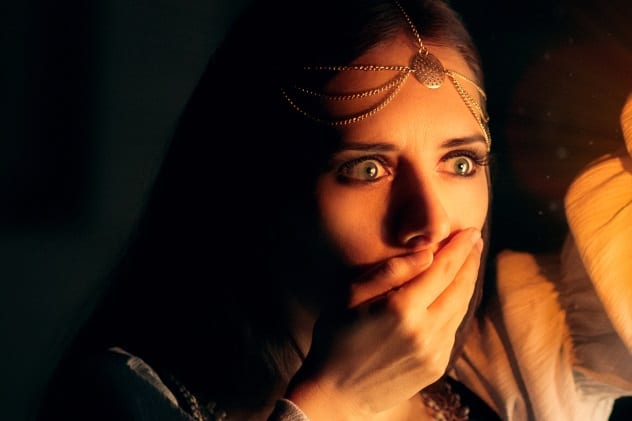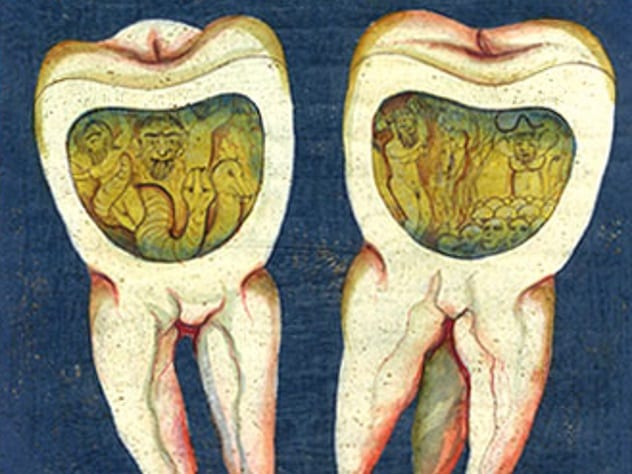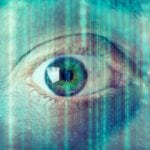 Music
Music  Music
Music  History
History 10 Less Than Jolly Events That Occurred on December 25
 Weird Stuff
Weird Stuff 10 Funny Ways That Researchers Overthink Christmas
 Politics
Politics 10 Political Scandals That Sent Crowds Into the Streets
 Weird Stuff
Weird Stuff Ten Bizarre Facts About The Doge Meme
 Our World
Our World 10 Ways Your Christmas Tree Is More Lit Than You Think
 Movies and TV
Movies and TV The 10 Coolest Stars to Set Sail on The Love Boat
 History
History 10 Things You Didn’t Know About the American National Anthem
 Technology
Technology Top 10 Everyday Tech Buzzwords That Hide a Darker Past
 Humans
Humans 10 Everyday Human Behaviors That Are Actually Survival Instincts
 Music
Music 10 Surprising Origin Stories of Your Favorite Holiday Songs
 History
History 10 Less Than Jolly Events That Occurred on December 25
 Weird Stuff
Weird Stuff 10 Funny Ways That Researchers Overthink Christmas
Who's Behind Listverse?

Jamie Frater
Head Editor
Jamie founded Listverse due to an insatiable desire to share fascinating, obscure, and bizarre facts. He has been a guest speaker on numerous national radio and television stations and is a five time published author.
More About Us Politics
Politics 10 Political Scandals That Sent Crowds Into the Streets
 Weird Stuff
Weird Stuff Ten Bizarre Facts About The Doge Meme
 Our World
Our World 10 Ways Your Christmas Tree Is More Lit Than You Think
 Movies and TV
Movies and TV The 10 Coolest Stars to Set Sail on The Love Boat
 History
History 10 Things You Didn’t Know About the American National Anthem
 Technology
Technology Top 10 Everyday Tech Buzzwords That Hide a Darker Past
 Humans
Humans 10 Everyday Human Behaviors That Are Actually Survival Instincts
10 Crazy Scientific Theories That Used To Be Accepted As True
Scientific theories are not definite. They can always be proved and disproved. That’s why if we dig deeper into history, we will find it filled with some crazy theories that used to be accepted as true.
As an example, it was once believed that the traits of a woman’s ex could be transferred to a child she has with another man. What could be crazier than that? And there’s more where that came from. Here are nine more theories that used to accepted as fact.
10 Maternal Impression

Until the early 20th century, people believed the experiences of a pregnant woman could alter her fetus. This was called maternal impression. People claimed maternal impression could be caused by what the mother heard. For instance, a woman could birth a deaf child if she heard a loud sound while pregnant.
It could also be caused by what the mother saw. A pregnant woman could give birth to a blind child if she saw a blind person. Doctors advised pregnant women to visit pleasant areas like art galleries and music concerts so that they wouldn’t give birth to deformed children.
In 1726, a servant girl named Mary Toft exploited the belief in maternal impression when she tricked doctors into believing she had birthed rabbits. The doctors concluded that her babies turned into rabbits because she ate rabbits, dreamed of rabbits, and was fond of chasing rabbits around the garden.
Joseph Merrick (famously called the Elephant Man) was believed to be a victim of maternal impression. People thought he was deformed because his mother had been scared by an elephant during pregnancy.[1] Today, we know Merrick suffered from neurofibromatosis and/or Proteus syndrome.
9 Preformationism

During the 17th and 18th centuries, doctors believed that the human sperm or egg contained a tiny human that grew in the womb. This belief was called preformationism, and it extended to animals and insects. Scientists even claimed to have found small winged creatures in chicken embryos.
Preformationism was disproved after the development of more powerful microscopes. Scientists observed human and animal eggs, sperm, and embryos and discovered that they did not contain miniature creatures. Today, preformationism has been superseded by epigenesis.[2]
8 Spontaneous Generation

Spontaneous generation was the belief that living organisms were created from nonliving matter. For instance, it was believed that mice were created from hidden foods and that maggots came from spoiled meat. The theory first appeared in the Roman era.
Spontaneous generation was the result of observation. People noticed that maggots always appeared on spoiled meat and that mice mysteriously appeared in bread and cheese covered in old clothes and kept in dark areas.[3] Someone in the 17th century even wrote that mice could be created by wrapping wheat husks in a sweaty cloth and leaving it in an uncovered jar for 21 days.
Over the centuries, several scientists disproved spontaneous generation, but none provided any definitive experiments. Sometimes, adherents of spontaneous generation even twisted the experiments to support their beliefs. The theory was finally brought down by Louis Pasteur in 1859.
7 Telegony

Telegony was the belief that traits from a woman’s former sexual partner could be transferred to a child she had with another man. It was proposed by the famous Greek scientist and philosopher, Aristotle.
While disproved today, telegony was taken seriously at the time. This is why Greek heroes usually had two fathers—one a human and the other a god. It was also the reason sitting and future British kings were not allowed to marry women who were previously married. A notorious incident played out in the 14th century when the British monarchy attempted to prevent the marriage between future king Edward the Black Prince and Joan of Kent, a divorcee. (Edward ended up dying before his father and never got to be king.)
Telegony was disproved in the 19th century, when it was determined that genetics determined the traits of a offspring. Interestingly, in 2014, researchers at the University of New South Wales discovered that telegony is actually real in fruit flies. The first male fly a female fly mates with determines the size of the offspring, even after she’s mated with others.[4]
6 Tooth Worm

Thousands of years ago, scientists believed toothache was caused by the presence of a worm inside the tooth. They called this supposed interloper the tooth worm. The first mention of the tooth worm was around 5000 BC.
Scientists did not realize it was bacteria that ate into in teeth until the 18th century, when the tooth worm theory was disproved. Before then, they claimed the tooth worm hid at the root of the tooth and caused a toothache when it moved. The pain stopped when the worm rested.
The theory was reinforced by the fact that the nerve at the lowest part of the tooth resembled a worm. However, scientists did not agree on what the supposed worm looked like. British scientists said it looked like an eel. German scientists said it resembled a maggot.
Some scientists did not accept the nonexistence of the tooth worm at the time it was disproved in the 18th century. They held onto the belief that tooth worms caused toothaches until the 1900s.[5]
5 Miasma Theory

Doctors of the Middle Ages believed some dangerous vapor in the air, referred to as miasma, caused diseases. The belief in miasma was so rife that malaria was named after it. Malaria was formed from the Italian words mala (“bad”) and aria (“air”). Obviously, people believed malaria was caused by bad air.
People also believed the deadly plague was caused by bad air. Doctors treating plague victims during the Great Plague of London even put flowers in their face masks to protect themselves from the supposed bad air. While this did not protect them from the plague, the fear of miasma had its upsides.
Doctors promoted cleaner environments because of the erroneous belief that the dangerous vapors were released by decaying substances and creatures. Florence Nightingale, the mother of modern nursing, also ensured that hospitals were clean, with plenty of air.
In England, people unwittingly protected themselves from diseases when they cleared the streets of the filth they suspected of creating miasma. Said filth was truly causing illness, but not in the way they thought. The lack of this knowledge was a major downside for medicine.
Doctors often left their hands unwashed when attending to patients and unwittingly transmitted diseases among them. Miasma theory went into decline in the 1800s, when scientists discovered that sicknesses were caused by microorganisms like bacteria. This is the germ theory and is still around today.[6]
4 Caloric Fluid Theory

Today, we know heat is a form of energy. Like other forms of energy, it can neither be created nor destroyed, but it can be transferred from one form to another. People did not know this few centuries ago. In 1787, French chemist Antoine Lavoisier even proposed that heat was a fluid, which he called caloric fluid.
Lavoisier claimed that heat was transferred from a hotter body to a cooler body via caloric fluid. The cooler body heated up as it was filled with more caloric fluid. The caloric fluid theory was the go-to explanation for several heat-related phenomena at the time.
For instance, scientists claimed that the increase in temperature observed during compression was the result of caloric fluids getting squeezed into a smaller space. In essence, more caloric fluids meant more heat. The theory was disproved several years after it was proposed.[7]
3 Hollow Earth

The Hollow Earth theory is a bit different from the other theories we have mentioned here. First, it was never accepted by the majority of scientists. Besides, some people still consider it true, even though there is no evidence of its veracity, and every fact we know about the Earth proves it is false.
The Hollow Earth was proposed in 1692 by Edmund Halley, the same man Halley’s Comet is named after. Halley proposed that the Earth was hollow after he discovered that our planet’s magnetic field often changed. He believed this was possible because the Earth had more than one magnetic field.
Halley postulated that our world consists of four spheres. The Earth as we see it is the largest sphere; it is outside, with three other spheres inside. The spheres get smaller the farther they are inside the Earth. This means the innermost sphere is the smallest, and the outermost is the largest.
Several scientists supported Halley’s theory, and some even added their opinions. Leonhard Euler claimed a sun inside the Earth provided light for the people living in the inner Earths. Sir John Leslie suggested there were actually two suns. Nevertheless, the theory has been disproved, but not everyone agrees.[8]
2 Humoral Theory

According to the humoral theory, every human has four humors. These are blood, phlegm, black bile, and yellow bile. Each humor was associated with one of the four elements: air, earth, water, and fire. Each humor was also linked with one of the four seasons. Everyone was thought to be at risk of having an abundance of each humor during one of the seasons. For instance, blood was said to be plentiful in spring. This could quickly cause problems, because the body needs the four humors to be balanced to perform normally.
Doctors often treated people for imbalanced humors in the past. Depending on the diagnosis, patients were required to exercise or take certain foods and medicines. Sometimes, doctors employed radical tactics like using a hot iron to create blisters on the skin of their patients or forcing them to take laxatives to clear their bowels. In extreme instances, they just drained the body of the excess humor. Humoral theory was disproved in the 1800s.[9]
1 Geocentric Model Of The Universe

The geocentric model of the universe is one of the oldest theories in astronomy. It was the belief that the Earth is at the center of the universe and that every heavenly body, including the Sun, Moon, and other planets, revolve around our world. In actuality, this is true for the Moon but not for the Sun and other heavenly bodies out there.
The theory was first proposed by the ancient Greek philosopher Anaximander in the sixth century BC. Anaximander claimed that the Earth is a cylinder and that every heavenly body revolves round it. Plato, Pythagoras, and Aristotle later confirmed that the Earth is a sphere but still held that it’s the center of the universe.
Several astronomers challenged the geocentric model of the universe over the years—especially between the tenth and 12th centuries—but none were accepted as correct. This changed in the 16th century when Nicolaus Copernicus claimed that the Earth is not at the center of the universe.
Copernicus wrote his findings in his book, De revolutionibus orbium coelestium (On the Revolutions of the Heavenly Spheres). He knew the book would be controversial and only sent it to be published when he was near death. The geocentric model of the universe theory was finally disproved in the 17th century.[10]
Read about more decidedly bizarre theories on 10 Crazy Theories About Human Consciousness and 10 Disease Theories That Were Spectacularly Wrong.








